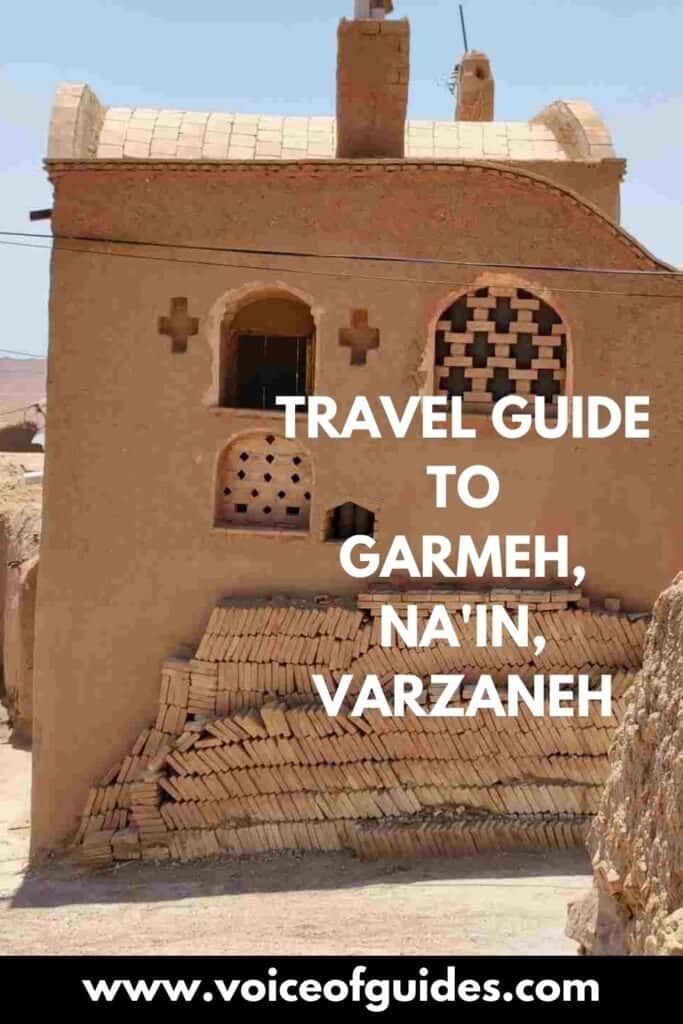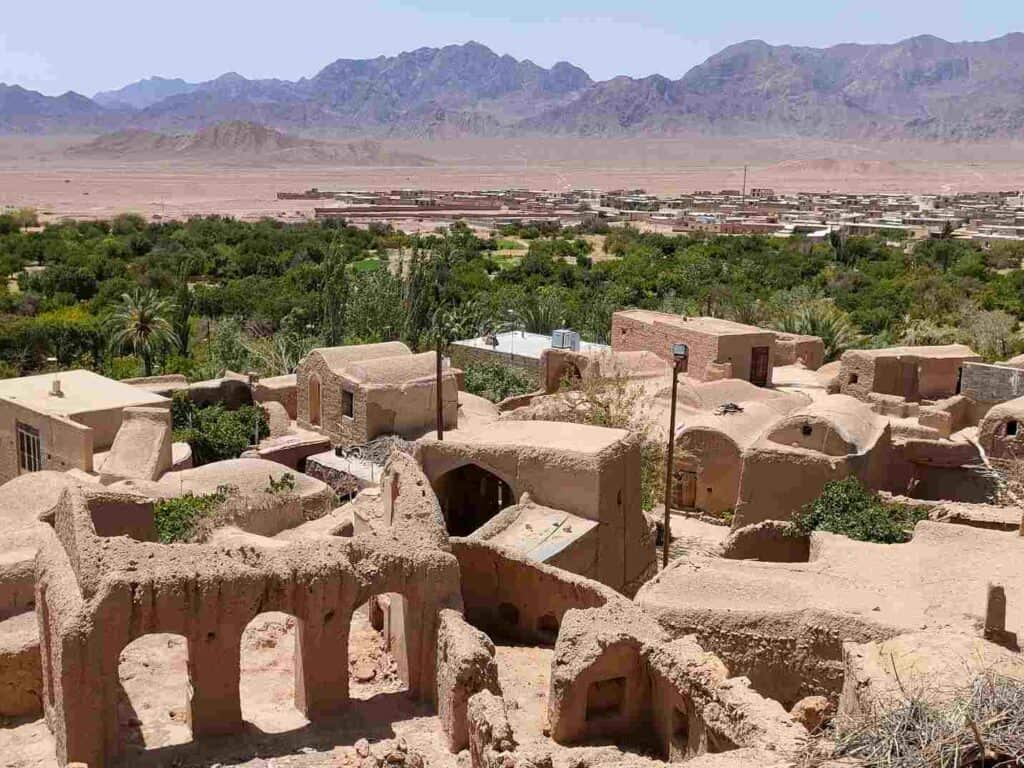This article may contain affiliate / compensated links. For full information, please see our disclaimer here.
Garmeh is one of the most famous oasis villages in Iran and, despite its remote location, one of the most touristic as well. It is an ideal place to have a trip to the Mesr desert and enjoy a one or multi-day tour in the desert. Garmeh is accessible from Yazd, Isfahan, Kashan, and Tabas in South Khorasan province. It also makes sense to combine your visit to Garmeh with Na’in and Varzaneh desert tour. Since there is less information about the smaller places of the countryside, I made this travel guide about visiting Garmeh village, Varzaneh, Mesr and Na’in based on my experiences as a solo female traveler at the end of finishing my trip in northern Iran.
When is the best time to go to Garmeh village?
Once you are in Garmeh, combining it with a trip to the Mesr desert is almost a must. However, you should consider it when you go there. In summer, the temperature gets unbearably high in the desert, while it can drop below zero during winter. And it is not only about convenience. If the sand gets too hot, even the best 4*4 vehicles get stuck in the desert, so drivers must be careful. If you arrive during summer, book your tour in advance, and expect that it will take place early morning when the sand is still not overheated. In the low season, most (if not all) guesthouses close, and the vehicles stationing during the peak season in Mesr also leave the desert and return to their hometowns.
So, it may sound like a good idea to avoid crowds and go off-season, but the temperature makes desert trips harder to plan. Also, public transport is less frequent. I share this with you as I went there in the low season in June. Although I was quite the only tourist there, the options were also more limited. It also had to do with Iran opening up not long before for tourists after the pandemic, and it takes time for tourism to restart.
The best time to go to any desert in Iran is spring (March-May) and autumn (September – November).
This is a list of the best books to read about Iran
How to plan your trip to Iran
Book your flight to Iran: I always use Google Flights, Skyscanner or Wayaway to find the cheapest flight tickets worldwide. To get an extra 10% for your Wayaway Membership Plus program use my discount code VOG
Important: Booking.com and other common platforms do not work due to international restrictions in Iran. The only exemption is Skyscanner, where you can book both your international flight and accommodation in Iran!
Book your accommodation in Iran: Hostelworld.com offers a limited number of hostels. All other services are only available through local travel agencies, like 1st Quest.
Get your visa to Iran: 1st Quest or Tap Persia local companies can easily arrange your insurance for Iran
Book domestic flights, hotels, transfers, bus and train tickets, and local tours, all in one place via 1st Quest travel agency.
Another good thing is that by using my discount code, you get an extra 5% off your bookings: VOG%1stQ
Virtual Private Network (VPN): Use VPNExpress, the fastest and best Virtual Private Network to get access to blocked sites in Iran and to prevent hackers from stealing your private information.
Insurance to Iran: 1st Quest or Tap Persia local companies can arrange for you visa to Iran
Book local guides and local tours: Pirsik is specialized in offering tour guides and local tours in less touristic countries, including Iran.
How to go to Garmeh village?
You need to take the Isfahan-Birjand/Tabas bus from either direction and let the driver know you want to get off at Khur city. There is another Garmeh in North Khorasan, so do not get confused.
Yazd- Khur: 4 hours (325km)
Isfahan – Khur: around four and a half hours (400km)
Tabas – Khur: 2 and a half hours (190km)
From Khur you can take a private taxi to Garmeh, which costs 700 000 Rials.
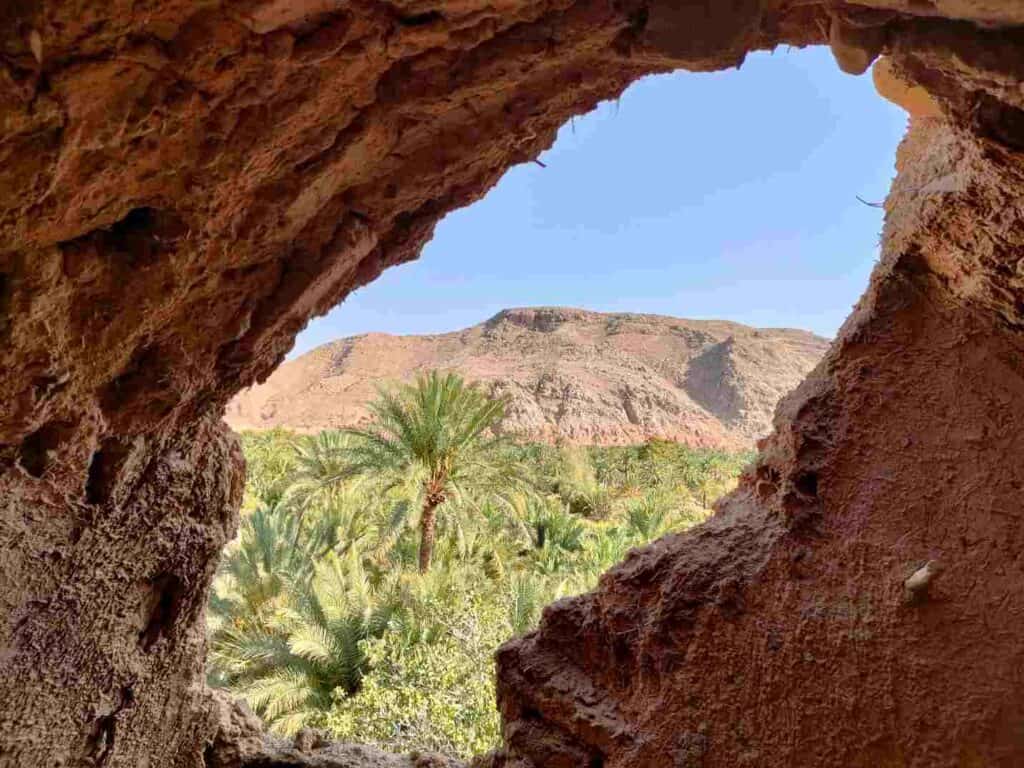
Where to sleep in Garmeh?
Ateshooni hotel and guesthouse are the primary choices in Garmeh, but there are about 80 guesthouses in the region, many directly at the entrance of the desert in Mesr village.
Ateshooni is managed by Maziar, who arrived from Tehran 25 years ago with the mission to settle in the remote Garmeh village and open Iran’s first traditional guesthouse in the countryside. Thanks to his efforts, a series of such guesthouses followed, creating many places of work. Mazier can answer all your questions and arrange your tours and transfers.
Email: maziyar@ateshooni.com, Tel.: +98 314 6348156
Things to do in and around Garmeh
1. Visit the village of Garmeh
Garmeh is a mudbrick village in the Dasht-e Kavir desert with over 1500 years old history. It stood along the Silk Road between China and Europe, with countless traders passing by. What makes Garmeh especially beautiful is being surrounded by expansive mountain ranges. The main attraction is to walk through the date palms with a pond in front and orchards and visit the abandoned mudbrick houses. At the foot of the mountains, Garmeh has a small warm spring. Another attraction is the castle dating back to the Sassanid times.
Garmeh village has become quite touristic lately, and locals have discovered its potential. During the peak season, small craft shops open up, and an open-air bazaar welcomes visitors.
If you look for less-traveled desert villages, South Khorasan province has some real gems like Ezmeygan, Esfahak, Khosf, Deyhuk, or Nay Band if you head in that direction.
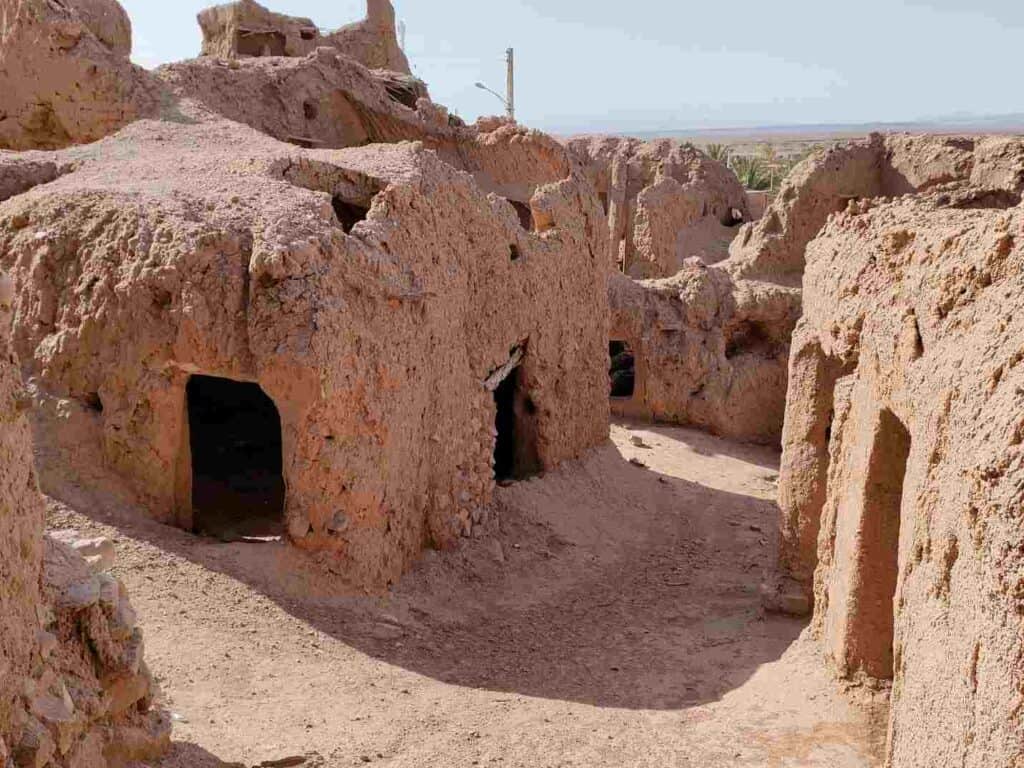
2. Go to the Mesr desert
There are several opportunities to go to the desert in Iran. 70% of its territory is covered with deserts and semi-deserts dotted with salt lakes. Lut and Kavir deserts (Dasht-e Lut and Dasht-e Kavir) occupy Iran’s central and eastern parts, with the Mesr and Varzaneh deserts being part of the Kavir desert. However, all deserts are different and have their unique feature, thus making a different experience.
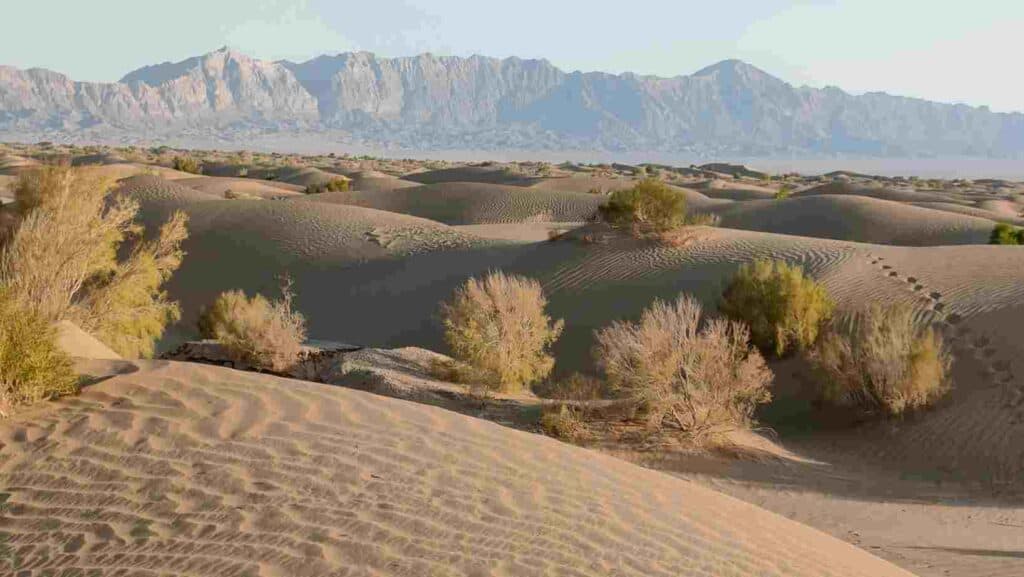
If you stay in Garmeh, you have two options to visit the Mesr desert.
1. You either take a taxi that drives you to the end of the asphalt road, the village of Mesr, and a few kilometers further to Farahzad, from where you walk inside the desert, climb the dunes for sunset, and return to Garmeh. It takes approximately 3-4 hours and costs about 1 800 000 rials.
2. The other option is to go on a day tour or multi-day tour to the Mesr desert, with an overnight. Your guesthouse in Garmeh or Farahzad can organize it for you. The price depends on the number of people and the type of tour you take.
There are 2-day desert tours organized from Isfahan, with an overnight.
Where to sleep in Farahzad?
Here is the link to a list of guesthouses in Farahzad directly at the entrance of the desert.
3. Visit the neighboring village, Iraj
The first time I heard about Iraj was when I arrived in Garmeh, and my landlord, the iconic Maziar, recommended going there. Iraj is one of the countless hidden gems in Iran, another thing the travel guidebooks do not mention. It has two parts, a modern one with massive ongoing construction, which is less charming. However, the old part of the village comprises mudbrick houses that cover an even bigger area than in Garmeh. It is also an excellent place to observe local agriculture. The town is located at a somewhat higher altitude, and you can have a great view of the surrounding mountains from several points.
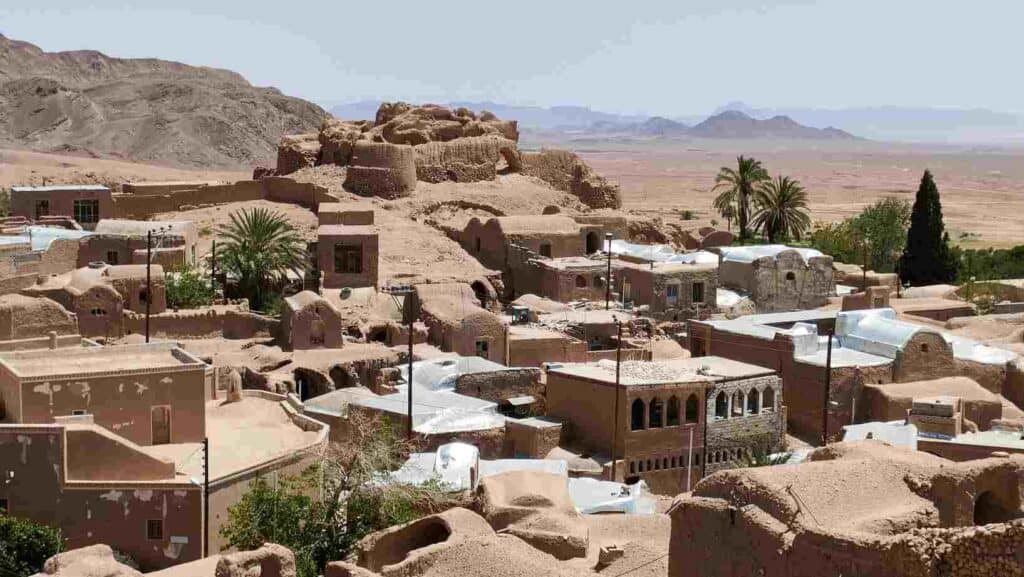
How to go to Iraj from Garmeh?
You can take a private taxi for 700 000 rials from Garmeh with the driver waiting for you during the visit.
It is a 25minutes drive from Garmeh to Iraj.
4. Go to Varzaneh and the sand dunes
They say that Varzaneh has a 5000-year-old civilization. Strolling around the streets of Varzaneh, you still see examples of traditional houses, and the whole town has the ambiance of a desert settlement. A unique thing about Varzaneh is that women wear a white abaya instead of the commonly used black one, but the reason is still unclear. Some say white was the holy color of the pre-Islamic Zoroastrian religion. It sounds logical as many people in Varzaneh speak an old Sassanian language, similar to Zoroastrian people in Yazd. Or it is because it is a cotton-growing region, which makes it an obvious choice. But it can also be because wearing white cloth is more practical in hot weather than a heat-absorbing black color.
How to go to Varzaneh?
From Isfahan, there are regular buses to Varzaneh, but on your way back, the last bus leaves in the afternoon. Ask about it on the spot not to get a bad surprise.
From Yazd, you need to take the Yazd-Esfahan bus and get off at Na’in. From Na’in you can take a taxi to Varzaneh.
You take the bus to Yazd from Kashan and get off at Na’in.
Things to do in Varzaneh
1. Varzaneh desert and salt lake
Heading to the desert is the best thing to do in Varzaneh as apart from some attractions that you can visit quickly, it does not have the same ambiance as when you venture further into the countryside. All the deserts in Iran have unique characteristics, and the Varzaneh desert is famous for its high golden-colored dunes that can be up to 60 meters, the highest in Iran. The desert is only 15 km from Varzaneh, making it the most easily accessible. No public transport exists, but you can take a private taxi from the town. Plenty of activities are organized in the desert, such as paragliding and sandboarding, camel-riding, horse-riding, quad, etc. You can also camp in the desert and stay there overnight.
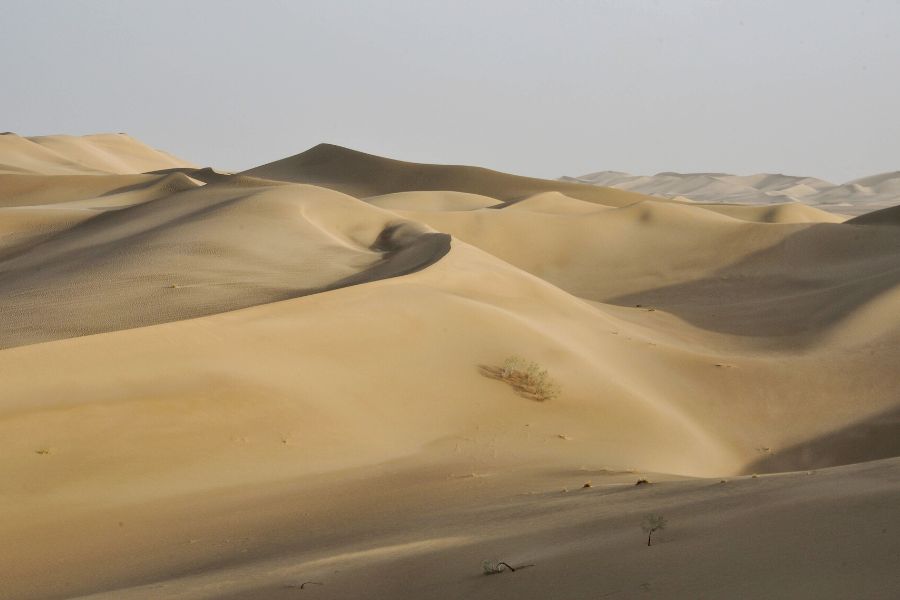
The Khavir desert (I can’t understand) is known for having expansive salt lakes. You can combine your desert tour with visiting Salt Lake, which locals still use for extracting salt.
Another unique thing about Varzaneh is the unusually clear sky with almost no clouds and pollution. There are tours from Isfahan specialized in observing the sky. With or without a telescope.
2. Ghoortan citadel
When you are in Varzaneh, do not miss visiting the citadel only 12 km far from the city along the Zayandarund river. Like many fortresses in the desert, it was built of adobe, including the massive walls surrounding the area. Covering 40 000 m2, this is the second largest citadel after the one in Bam. The fortress was inhabited earlier, but now only a few families live there. The fort is equipped with a mosque, water reservoirs, a pigeon house, and many residential buildings.
Its massive 3-4 meter-thick and 9-meter-high walls gave protection against the enemy already 1000 years ago.
3. Pigeon house
Varzaneh is not the only place to see a pigeon house, but you should at least see one. Pigeon houses were built in arid regions to collect their droppings and use them as fertilizers. It is imperative in the areas where most people make their living from agriculture, like Varzaneh. This pigeon house can accommodate 7000 pairs of pigeons.
Other attractions of Varzaneh are the 600-year-old Jameh mosque, the old bridge connecting the old and new part of the city over the Zayanderud river with some arches built in the Seljuk period in the 11th-12th century.
Where to sleep around Varzaneh?
Negaar Varzaneh hostel
Varzaneh traditional guesthouse
4. Stay in the Tak Taku traditional guesthouse in Toudeshk
There is an even better place to stay for the night, 50 km from Varzaneh, in the charming town of Toudeshk, along the highway from Isfahan to Na’in. It lies at an altitude of 2100 meters, so even on hot summer days, it has a pleasant climate.
It is worth stopping at Toudeshk only for this family-run guesthouse, where Mohammad, the owner, makes sure that guests get everything they need to enjoy.
He organizes tours, including a visit to Na’in and Varzaneh. This guesthouse was Mohammad’s childhood dream. Since the age of 14, he was watching the foreign bikers passing by on the road and tried to get into contact with them, although he could not speak any English. Later, a teacher helped him write a few sentences on a board that he was holding in his hand along the road with questions such as “Are you hungry?”, “Are you thirsty?”, “Do you need to sleep?”- this is how he invited foreigners to his grandfather’s house for the night free of cost. He just enjoyed being with them. Within a few years, he improved his English enough to think about having a guesthouse on his own. All his family got evolved. They bought an old stall where animals were kept earlier and converted it into a guesthouse. Check the photos in his album about what it looked like and compare them with what it has become. In the beginning, the whole family took their part in welcoming the travelers, including his brother, sister-in-law, and parents.
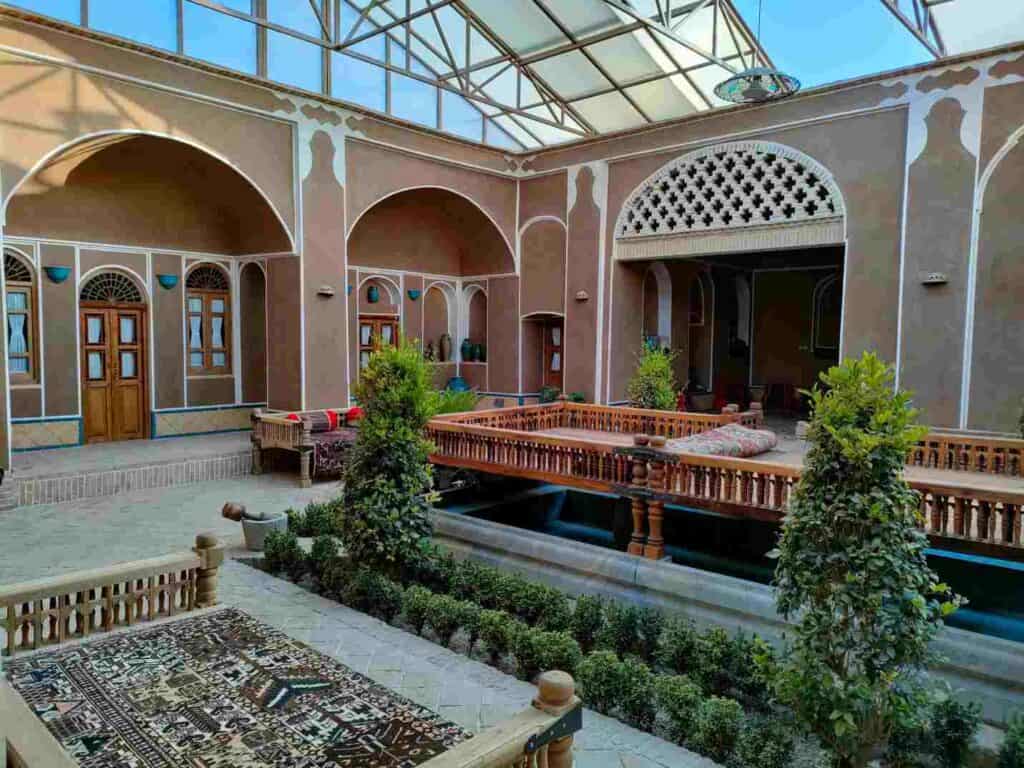
Little wonder this guesthouse has a personal touch, and every detail, from the door opened to the wall decoration, reflects Mohammad’s dedication to making his dream come true.
Over 20 years passed, and even the recent hardships of the pandemic and the harsh economic situation in Iran did not let his motivation diminish. He recently extended the guesthouse with a separate courtyard, where caravans can park safely in an enclosed area with water and electricity. They can use the bathroom/shower, do laundry, or order home-cooked fresh food. He never stops thinking about how he can constantly improve the place. As an avid motorbiker, Mohammad also arranges motorbike rentals for his guests.
There are several indications of this guesthouse throughout the village, and everybody knows the place.
Toudeshk has a center with a group of mudbrick houses, a mosque, and a traditional bathhouse. The wooden doors of this old quarter show fine examples of the artistic door knockers designed so that the residents know if the guest is a man or a woman. The guesthouse got its name after the sound when somebody knocked on the door.
So, after hearing this story, who would not like to head to the Tak Taku guesthouse? In the morning you can climb the nearby mountain to enjoy the sunrise.
The guesthouse also organizes tours to climb the “Black Mountain”, the highest peak in the neighborhood, over 3000 meters. And you can have a one-day or overnight trip to the Varzaneh desert and a salt lake.
Na’in, the city of carpets
Na’in has a history of 2000 years, making it one of the oldest settlements in Iran, located at the junction of the desert road to Tabas and Mashhad. Many people in Na’in speak an ancient Sasanian dialect. Over 3,000 years ago, the Persians learned how to build underground canals (qanats) to direct water from the mountains to the fields. In the 1960s, the ancient system still provided 70% of the water supply. Apart from Yazd, Na’in is also a great place to observe qanats, cisterns, and wind catchers, all built to cool down the temperature and provide water supply in the desert.
1. One of the oldest mosques in Iran
Jameh mosque, one of the first four mosques built in Iran after the Arab invasion dating back to the 8th century, is Na’in’s main attraction. Its basement was probably used as a fire temple before a mosque was built on the top. Later it was ideal for prayers during hot summer days with the light filtering through an alabaster stone and an intricately carved wooden minbar (the place where the imam makes his sermon). An underground water channel runs under the mosque that keeps the temperature cool, connected with a staircase to the mosque. In the past, they also used it for ablution (ritual washing before prayer).
The mosque lacks the blue-tile decoration and many other elements of the more famous mosques in Isfahan or Shiraz. The elaborate brickwork in the courtyard is, however, equally impressive. This mosque does not have “iwans” (decorative Islamic arches), and its 28-meter-high octagonal minaret was only added to it 700 years ago.
But Na’in has a lot more to offer than the mosque.
2. Na’in carpets
Na’in is famous for its high-quality hand-woven carpets and textiles in Iran that have become known worldwide. They use a thinner yarn and apply local patterns with unique coloring, which makes it incredibly top quality that can be sold for a high price. They gain colors from nature instead of synthetic dyes.
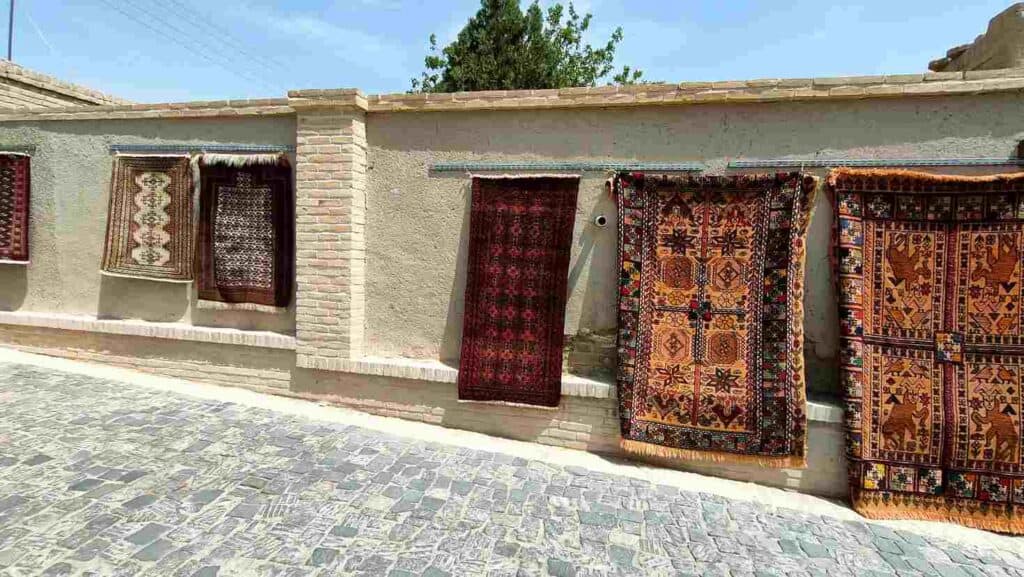
3. Naryn castle
From the Jameh Masjid, it is a few minutes walk to the fortress, the oldest building of Na’in. Some assume it dates back to the pre-Islamic period and was probably used for military purposes.
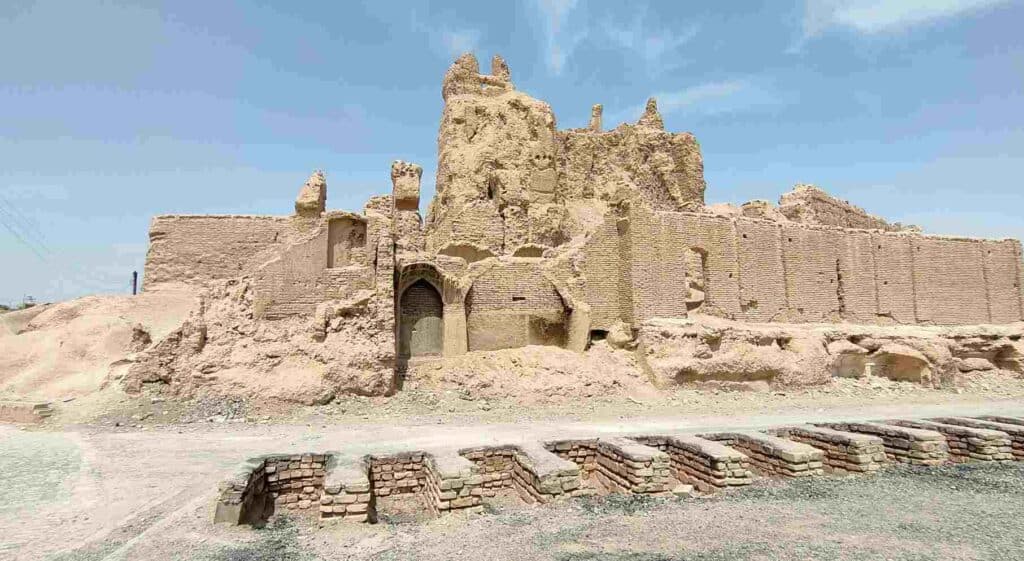
4. Qanat-based watermill
The water mill is placed 28 meters underground that can be accessed through a 100-meter-long corridor. The qanat channel passes eight meters above the mill and fills the water tank. When enough pressure is provided, the water is released and turns the turbine. The water mill is located only a few kilometers from the Jameh Mosque in the Mohammadieh quarter. It is an attractive part of Na’in with carpet weaving shops and a citadel.
I hope this travel guide helps you plan your visit to Garmeh, the picturesque oasis village. Since it is a longer drive from the main cities, it is better to combine it with other trips, visiting the Mesr desert, Varzaneh and Na’in. Please leave a comment if you have more questions about that.
Other articles about Iran
What you can and cannot do in Iran
The best books to read about Iran
The best 2-week itinerary in Iran (the classical route)
The best 2-week north Iran itinerary
All you need to know about the Iranian currency
The best places to visit in Tehran (museums, palaces, religious sites)
The best things to do in Tehran
Travel guide to Tabriz, North Iran
Travel guide to Mashhad, the holy city of Iran
Best things to do in Lahijan, the city of tea in Iran
Best things to do in Ramsar at the Caspian Sea
Is it worth visiting South Khorasan province?
More articles about the Middle East
Pin it for later!
